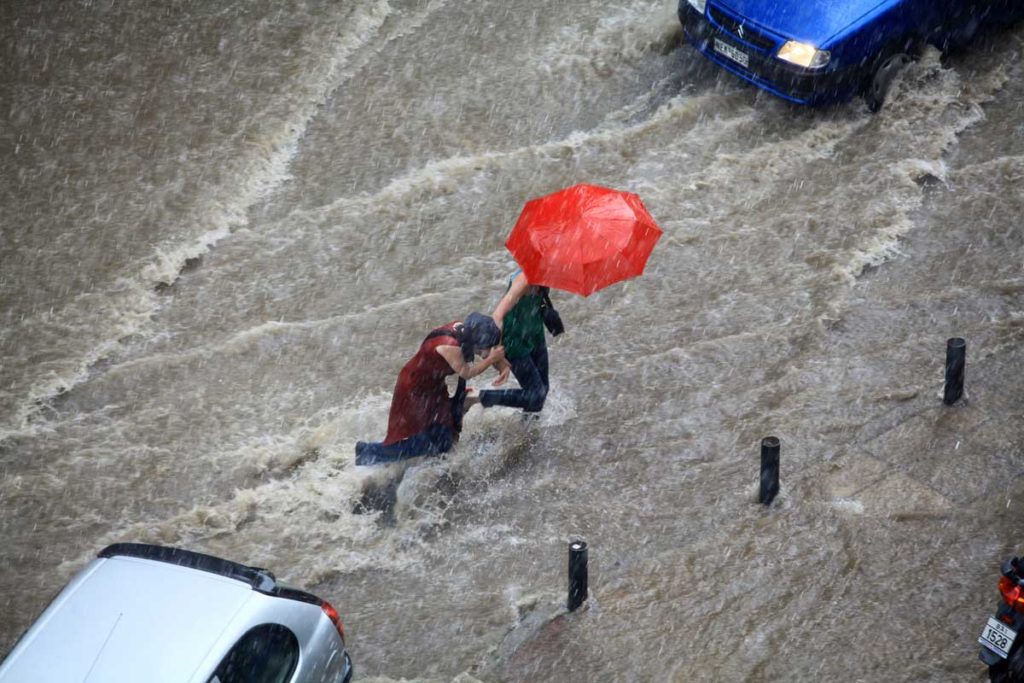When the rain outside is accompanied by thunder, we know that it is followed by lightning. In this case, there are some places where you should not go for your own safety – mostly outdoors.
“If you hear thunder, go indoors and remain there for 30 minutes after the last clap of thunder,” the National Weather Service advises in its lightning protection guidelines. The greatest potential damage during a storm is a lightning strike.
According to the Centers for Disease Control and Prevention, you may think that a lightning strike is only possible when you’re outside, and as long as you’re home you’re completely safe, but that’s not always the case. The agency reports that “approximately one-third of lightning strike injuries occur indoors.”
According to John Homenuk, a meteorologist and founder of New York Metro Weather, this is a trend in the news You should not shower during a storm While you may have seen watering recommendations, there are other activities you should avoid at home until the storm passes.
5 ACTIVITIES TO AVOID AT HOME DURING A STORM

Homenuk, the National Weather Service and the CDC recommend avoiding these activities at home during a thunderstorm:
- To take a shower
- Wash the dishes
- Standing near windows, doors, eaves and concrete
- Touching electronic devices that are plugged into an electrical outlet (e.g. computers, laptops, gaming systems, washers, dryers, or stoves)
- Using a wired phone
Stay away from water
First, Homenuk warns against being near or in the water during a storm. If lightning strikes near your home, showering, bathing, or washing dishes can be dangerous. “When lightning occurs, it generally travels along the path of least resistance, which takes it toward metal that can pass through pipes,” he says.
The CDC states that the risk of lightning striking your plumbing is lower with plastic pipes than with metal pipes. However, the agency still advises you to “avoid all contact with pipes and running water to reduce the risk of being struck during a thunderstorm.”
Homenuk says washing dishes may pose less of a risk than bathing or showering because your entire body shouldn’t be submerged or standing directly under a metal showerhead while the pipes are running. “But again, if you can, you should generally wait out the storm rather than using water and pipes, which would be one way to transport electricity,” he says.
WHAT TO CHECK DURING A STORM?


According to Homenuk, you should consider these criteria when deciding where to wait out a storm indoors:
- Is the building solid?
- Am I away from all windows?
- Am I standing near interior walls in my home and not exterior walls?
see also


However When you’re stuck outside in the middle of a stormMake sure you’re not standing near water, near or under a tree, or on tall objects, she adds. These places are not safe during a storm.
Additionally, if you can’t get home during a severe thunderstorm, your car can provide you with peace of mind. “A good second option. But if there’s a store or other building you can get to, then that’s a good option too.”
Homenuk during a severe storm Parking under an underpass poses a potential risk He says most people don’t know.
“These areas are not safe. “In fact, when there are high winds under these underpasses, the winds can be even stronger and more dangerous because they can move through them faster.” “It also poses a major traffic risk.”
If you notice flooding, don’t try to drive through it or your car could get stuck, warns Homenuk. It may be much deeper than it seems. And most importantly, if you can do it safely, “it’s best to try to stay indoors during the storm,” he says.
Where should we hide at home during an earthquake?
What is the life triangle and how does it come about? Be careful during an earthquake!